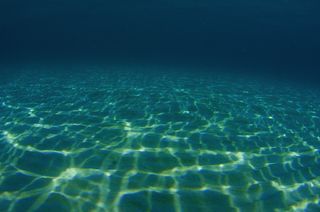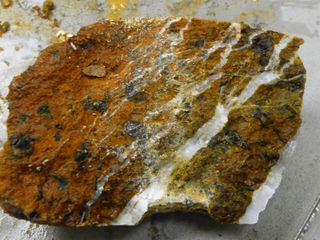Microbes in Earth's Oceanic Crust May Gobble Oxygen

Miles beneath the sea surface, buried beneath the seafloor sediment, a relatively unstudied ecosystem of bacteria and other microbes teems with activity in the Earth's oceanic crust. Some scientists think this system could hold the largest reservoir of life on Earth, but direct measurements from the difficult-to-reach region remain scarce.
Now, an international team of researchers based at the Bigelow Laboratory for Ocean Sciences in East Boothbay, Maine, have developed a new model that they say offers the best estimates yet for how much oxygen these microbes may consume — a measure that could be used in future studies to determine the size of this ecosystem.
"We know there's a vast reservoir of life in the ocean crust, but unless we take steps to quantify its metabolism, we'll never know how vast it is," study co-author Sam Hulme, of Moss Landing Marine Laboratories in California, said in a statement.
The team collected new measurements from the seabed — the thick layer of mucky sediments that sits below the ocean water but atop the rocks of the Earth's crust — in order to infer what may be going on beneath these sediments, in the oceanic crust. Their measurements showed that oxygen levels peak near the seabed's borders with the water above and rocky crust below, but dip between these two boundaries. This suggests that oxygen travels into the sediments from above and below, but that some process consumes oxygen within the sediment's thick middle section. [Extreme Life on Earth: 8 Bizarre Creatures]
Given the environmental conditions within the sediment, the researchers said, microbes are the likely culprits for this oxygen dip. Bacteria use oxygen to break down carbohydrates into usable forms of energy.
The team used the seabed oxygen measurements to predict oxygen flow into and out of the the crust below the seabed. The model suggests microbes in the crust likely consume significant volumes of oxygen, but work is still needed to determine just how large the microbe community is based on these measurements. The team details their findings today (Sept. 27) in the journal Nature Communications.

If the crustal microbial population is as abundant as some scientists think it is, then it would comprise a significant but currently overlooked component of Earth's carbon cycle, said study co-author Beth Orcutt, of the Bigelow Lab. Further study of these ecosystems will help clarify their role in the nutrient cycles that control the abundance of life on Earth, she said.
Sign up for the Live Science daily newsletter now
Get the world’s most fascinating discoveries delivered straight to your inbox.
In a broader sense, the microbes may also provide a window into the earliest evolution of life on Earth, Orcutt said.
"If it turns out that there is a large reservoir of life in rocks that we haven't accounted for, that might have interesting implications for the evolution of life on Earth," Orcutt told LiveScience. "If we have this reservoir of life that has genetic novelties or new species, then that might help us understand how life is connected on Earth, and how it is connected over geologic time."
The team collected sediment cores along the Mid-Atlantic Ridge, an underwater mountain range that bisects the length of the Atlantic Ocean, nearly 3 miles (4.8 kilometers) beneath the sea surface. The cores were collected in 32-foot (10-meter) increments to make them easier to handle, and spanned a total distance of up to 310 feet (94 m). The team used a needlelike probe to measure oxygen levels throughout the cores.
The researchers said they deployed sensors into the core holes in the seafloor, and they plan to retrieve data from the sensors in 2014, to help verify the results of their model. They also plan to more closely assess the seafloor sediment contents to determine the species of microbes present and the food sources available to the ecosystem.
Follow Laura Poppick on Twitter. Follow LiveScience on Twitter, Facebook and Google+. Original article on LiveScience.

Most Popular


